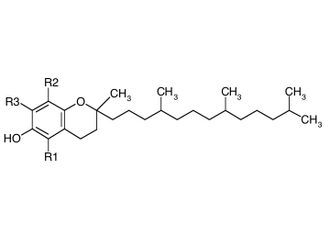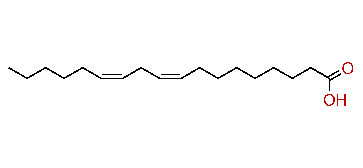The Healthy Effects of Grapes Seeds

Introduction
Grapes is, without any doubt, one of the most common and appreciated fruits in the world; it is known it was grown and eaten since ancient times, and its most common product, wine, was drunk by Greeks and Romans.
Grape seeds have always been treated ambiguously by popular culture: some beliefs reported of a dangerous effect on our body, maybe based on a wrong knowledge of the fruit itself, while a beneficial effect were attributed to them by different beliefs. Nowadays, thanks to the great improvement of medical and scientific research, we are able to definitely close this debate.
Analysing the chemical composition of grape and its seeds, we were able to identify the molecular action of its components on our cells’ metabolism; this lead the scientific community to several discoveries about the role of this fruit and its possible use in medicine.
Chemical composition of grapes seeds
In studying the chemical composition of grape seeds it can be useful to consider only the elements which can be healthy, or even just involved, in our metabolism. Using this criterion, we can be able to recognise this molecules:
- VITAMIN E: In effect designates a group of antioxidant molecules, of which the most active in human body is α-tocopherol. It acts like a fat-soluble antioxidant that stops the production of reactive oxygen species formed when fat undergoes oxidation.
Vitamin E
It is important to consider very carefully the relation between vitamin E effects and its dose: 1 gram of grape seed contains almost 0,15 mg of vitamin E. Considering that , for an adult, the daily intake of vitamin E is about 15 mg, it is necessary to eat 100 g of grape seeds (which means about 2 kilograms of grapes!!!) to reach the best antioxidant effect. We can say that the effects of vitamin E are strictly limited by the dose.
Required intake

- LINOLEIC ACID: One of the essential fatty acids for the human body; it is necessary to introduce it with alimentation, because we can’t produce it.
Linoleic Acid

- FLAVONOIDS: a specific group of polyphenols. This category of molecules can be found in a huge spectrum of different food, but among them resveratrol, quercetin and catechin (“the RQC complex”) can be found expecially in grapefruit.
There’s no need to spend time in the analysis of the beneficial effects of Vitamin E and of the utility of linoleic acid, but it could be very interesting to examine the recently discovered healthy role of flavonoids in the treatment of different diseases.
Poliphenols and Flavonoids
Polyphenols are the most abundant antioxidants in our diet and are widespread constituents of fruits, vegetables, cereals, olive, dry legumes, chocolate and beverages, such as tea, coffee and wine. Despite their wide distribution, the healthy effects of dietary polyphenols have come to the attention of nutritionists only in the last years; the main factor responsible for the delayed research on polyphenols is the variety and the complexity of their chemical structure.
Polyphenols comprise a wide variety of molecules that have a polyphenol structure (several hydroxyl groups on aromatic rings), but also molecules with one phenol ring, such as phenolic acids and phenolic alcohols. This kind of molecules are divided into several classes according to the number of phenol rings that they contain and to the structural elements that bind these rings to one another. the main groups of polyphenols are: flavonoids, phenolic acids, phenolic alcohols, stilbenes and lignans.

FLAVONOIDS share a common carbon skeleton of diphenyl propanes, two benzene rings (ring a and B) joined by a linear three-carbon chain. the central three-carbon chain may form a closed pyran ring (ring c) with one of the benzene rings. Flavonoids are themselves divided into 6 subclasses, depending on the oxidation state of the central pyran ring: flavonols, flavones, flavanones, isoflavones, anthocyanidins and flavanols.

In grapefruit, the most important found flavonoids are resveratrol, quercetin and catechin: this molecules are often indicated as part of the RQC COMPLEX, which can be considered the principal source of flavonoids in this fruit.

Flavonoids
Flavonoid antioxidants: chemistry, metabolism and structure-activity relationships, 2002
ANTIOXIDANT ACTION
The capacity of flavonoids to act as antioxidants depends upon their molecular structure. The position of hydroxyl groups and other features in the chemical structure of flavonoids are important for their antioxidant and free radical scavenging activities.
In our case, quercetin is a potent antioxidant because it has all the right structural features for free radical scavenging activity: its activity has been proved evaluating the capacity of this flavonoid to inhibit the oxidation of LDL by copper. Preventing the oxidation of low-density lipoprotein, the risk for the development of atherosclerosis is reduced.
Other studies seem to demonstrate that quercetin has the ability to relieve hay fever, eczema, sinusitis and asthma; unfortunately, these effect are not still completely understood and shared by the entire scientific community.
Antioxidant Activities of Flavonoids
Characterization of flavonoids from Dryopteris erythrosora and evaluation of their antioxidant, anticancer and acetylcholinesterase inhibition activities, 2013
ANTITUMORAL EFFECTS
In this last years, many studies have evaluated and proved the antitumoral effect and the inhibition of tumorigenesis caused by the RQC complex, and especially by resveratrol. These effects have been tested on human cells only in in-vitro studies, whereas in-vivo studies have been carried out on mice; since recently these molecules have been recognized healthy and perfectly working, they may be used as drugs in a near future, after a definitive experimentation on humans.
The following extracts were taken from different recent studies, and all of them seem to demonstrate the antitumoral action of resveratrol and other grapes’ flavonoid:
- "Grape polyphenols inhibit akt/mammalian target of rapamycin signaling and potentiate the effects of gefitinib in breast cancer" . This study demonstrated that a combination of dietary grape polyphenols resveratrol, quercetin, and catechin (RQC), at low concentrations, is effective at inhibiting metastatic cancer progression, investigating the molecular mechanisms of RQC in breast cancer.
RQC was found to reduce Akt activity, induce the activation of AMPK, and inhibit mTOR signaling in breast cancer cells, leading to an inhibition in cancer progression.
Grape polyphenols inhibit Akt/mammalian target of rapamycin signaling and potentiate the effects of gefitinib in breast cancer, 2012
- "The β-catenin/TCF complex as a novel target of resveratrol in the Wnt/β-catenin signaling pathway" . Wnts are secreted glycolipoproteins that play important roles in the regulation of tissue homeostasis. Binding of Wnt to receptors causes inactivation of the β-catenin destruction complex, which leads to the stabilization and nuclear translocation of β-catenin to initiate Wnt-responsive gene expression after associating with TCF in the nucleus. Any deregulation in Wnt processing can lead to an hyper-activation of this pathway: this can lead to a tumoral development.
We found that resveratrol indeed exhibited dose-dependent suppression of Wnt signaling, reduced the expression of Wnt target genes such as cyclin D1 and conductin, and inhibited the growth of Wnt-stimulated cells and Wnt-driven colorectal cancer cell; treatment with resveratrol did not alter the amount of β-catenin and its distribution in the cytoplasm and nucleus, suggesting that resveratrol did not affect the accumulation and nuclear targeting of β-catenin
The β-catenin/TCF complex as a novel target of resveratrol in the Wnt/β-catenin signaling pathway, 2012

- "Cancer chemopreventive activity of resveratrol, a natural product derived from grapes" . Resveratrol was found to act as an antioxidant and antimutagen and to induce phase II drug-metabolizing enzymes (anti-initiation activity); it mediated anti-inflammatory effects and inhibited cyclooxygenase and hydroperoxidase functions (antipromotion activity); and it induced human promyelocytic leukemia cell differentiation (antiprogression activity). In addition, it inhibited the development of preneoplastic lesions in carcinogen-treated mouse mammary glands in culture and inhibited tumorigenesis in a mouse skin cancer model. These data suggest that resveratrol, a common constituent of the human diet, merits investigation as a potential cancer chemopreventive agent in humans.
Cancer chemopreventive activity of resveratrol, a natural product derived from grapes, 1997
- Employing human HNSCC Detroit 562 and FaDu cells as well as normal human epidermal keratinocytes (NHEK), it was investigated grape seed extract (GSE) efficacy and associated-mechanism in both cell culture and nude mice xenografts. GSE selectively inhibited the growth, and caused cell cycle arrest and apoptotic death in both Detroit 562 and FaDu cells by activating DNA damage check-point cascade including ATM/ATR-Chk1/2-Cdc25C as well as caspases 8, 9 and 3. Consistent with these results, GSE treatment resulted in a strong DNA damage, and a decrease in the levels of DNA repair molecules Brca1 and Rad51 and DNA repair foci. GSE-caused accumulation of intra-cellular reactive oxygen species (ROS) was identified as a major mechanism of its effect for growth inhibition, DNA damage and apoptosis.
Conclusion
Grapes seeds can surely be considered healthy, basing on their chemical composition: not only we can found flavonoids and vitamin E, which play the role of antioxidants, and linoleic acid for the stability of cellular membranes, but flavonoids themselves (and especially resveratrol among them) act as chemopreventive and antitumoral agents.
This knowledge, which yet alone is very important, can be used to find new targets and drugs in cancer therapy: GSE (Grape seed extract) has already been developed and tested on mice and cell culture; the researchers found that GSE created an environment that is unfavorable for cancer cell growth, leaving the healthy tissue untouched.
Waiting for the development of a new RQC- based drug to prevent and inhibit cancer cell progression, we can only evidence the fact that grape seeds and his compounds are good for our metabolism: in this way, maybe we will not be able to find an immediate cure for cancer, but surely we can close the ancient debate about the healthy action of grape and his seeds.